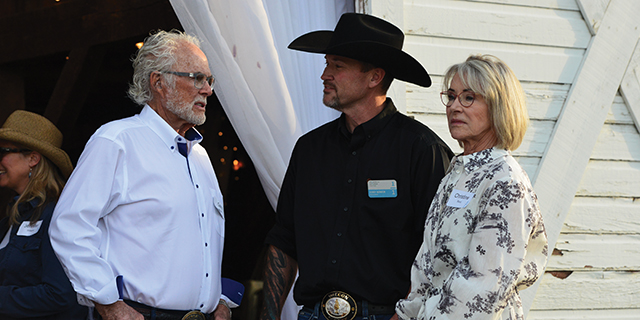WALLOWAS ALSO HOME TO STRONG GOAT NUMBERS
Published 12:00 am Friday, January 14, 2005
Dick Mason
Staff Writer
Baker County is not the only portion of Northeast Oregon with a strong mountain goat population.
Wallowa County also has solid number of mountain goats. There are now about 250 mountain goats in Wallowa County, including 55 on the Oregon side of the Hells Canyon area, according to an Oregon Department of Fish and Wildlife report.
Mountain goats are believed to be native to Oregon but disappeared from the state more than a century ago.
Mountain goats were first reintroduced to Oregon on March 18, 1950. On that day six mountain goats were released on the base of Chief Joseph Mountain at the head of Wallowa Lake.
The small herd consisted of three billies, two nannies and a yearling, according to an article by Tom McAllister in the June 28, 1951, edition of the Wallowa County Chieftain. The goats were trapped in the Cascade Mountains of Northern Washington by an Oregon Game Commission team and then transported to Oregon.
The Oregon Game Commission was allowed to trap the goats because of a trade with the Washington Game Department. Several years earlier antelope captured in Oregon had been released in Southeast Washington in the first phase of the trade.
The trapping process used that year was an involved one. Traps were set near the slopes of Mount Chopka at the head of the Okanogan Valley a few miles south of the Canadian border. The traps were set below a trail that crossed a small ravine.
As goats came down the trail, a crew swooped down and pushed goats into the trap, McAllister wrote.
The process took several days since most of the goats escaped the traps. The goats captured were among the 300 living in the area.
Once caught, a lot of work remained, for there was no road to the trap site. The goats had to be run down a 1.5 mile trail.
A stout line was secured to each horn and two men grasped the lines on opposite sides of the goat, McAllister wrote.
After getting started, the goats would charge down the trail, dragging their herders behind.
More than a dozen transplants have been made in Oregon since the one of March 8, 1950.





